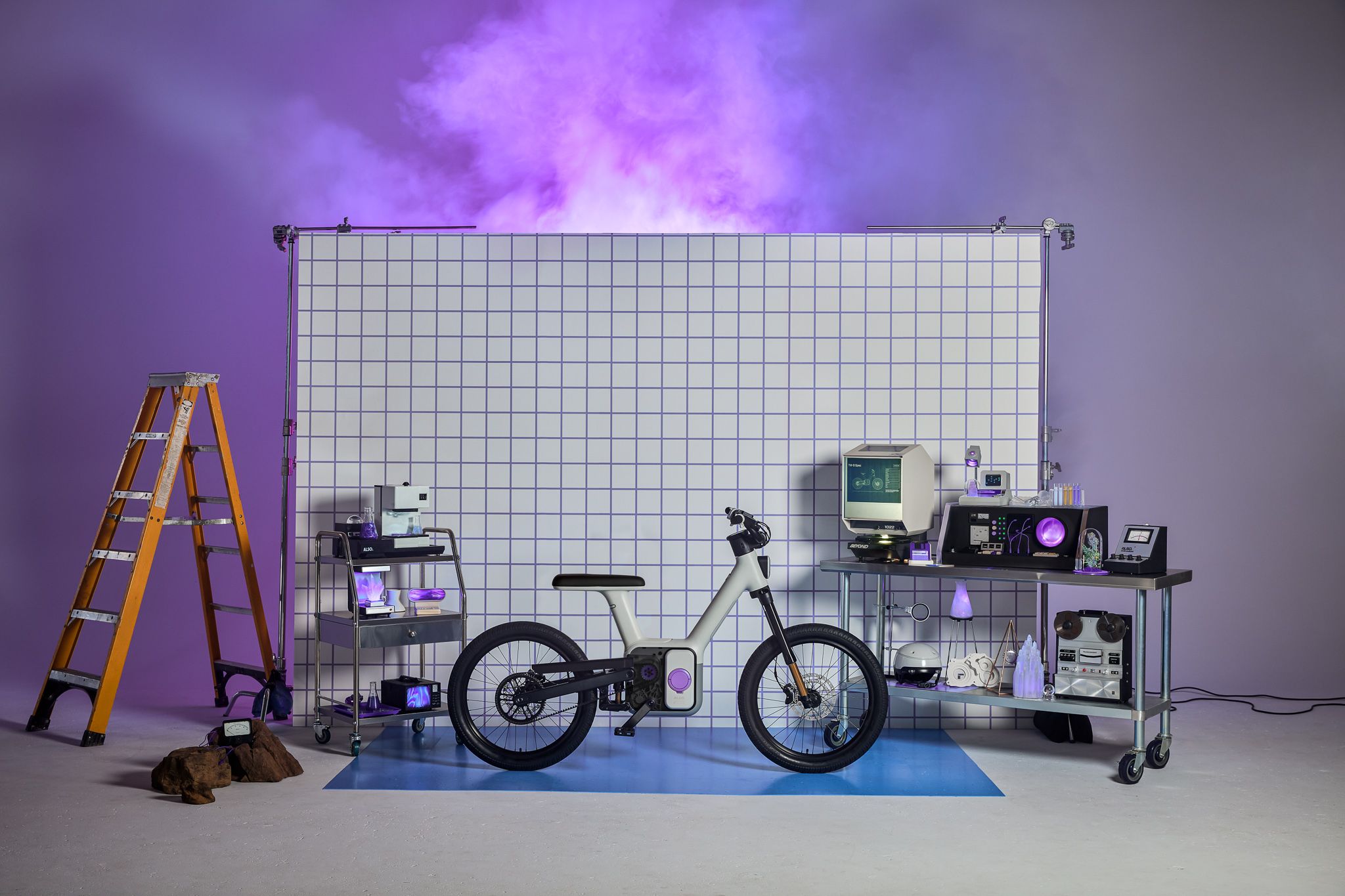All products featured on WIRED are independently selected by our editors. However, we may receive compensation from retailers and/or from purchases of products through these links. Learn more.
It’s hard to remember now that people used to be skeptical about electric bikes. Cyclists didn’t want unlicensed motor vehicles in bike lanes; people who didn’t bike found them to be dangerous. Even as more people adopt them to deal with carbon emissions or traffic, ebikes still have many issues. Cheap ones are impossible to repair. The nice ones have gut-punch prices, especially if this is your second or third vehicle. They have a learning curve when it comes to riding.
I’ve been reviewing electric bikes for years and, as many reviewers do, tend to evaluate them as an assemblage of different specs. High-quality proprietary frame, Bosch motor, safety certifications? More expensive. Direct-to-consumer, cheap brakes, no safety certifications? Less expensive. In my defense, this is the way that all bikes—not just electric ones—are marketed and sold. When Chris Yu, president of Rivian micromobility spinoff Also, asked me to guess how much the company’s new ebike costs, given its capabilities, I shouted, “Uh, $25,000!” as I joyfully sped down the street on the two-wheeler.
Yu—riding next to me on an Also electric bike—laughed. Also’s base model TM-B that is available for preorder today costs less than $4,000, much less than my own Tern GSD ebike. The company is announcing two additional models, the TM-B Performance and the TM-B Limited Launch Edition, in addition to two quad vehicles for cargo delivery. I am generally skeptical about car manufacturers launching electric bike lines, but I don’t think this is a stunt. I really like this bike.
Video: Adrienne So
Power On
Also can pull off this feat partly because the company is a Rivian spinoff. That’s not to say the two companies are the same—Yu was careful to note that the companies are totally separate; Rivian holds a minority stake, while Also has raised its own funds. Rivian’s health as a company does not directly affect Also, but it makes some of the bike company’s advantages, like being able to purchase a bike at a Rivian dealership, a little more difficult to realize should Rivian struggle.
The company’s bikes will also be repairable at Rivian locations, which solves one of my major frustrations with ebikes—all the proprietary components often make them exceptionally difficult to repair.
Like Rivian, Also opted to redesign the electric bike from the ground up. “We took this vertically integrated approach that Rivian has taken in the automotive space and re-optimized it, and re-sized it, for modes that are smaller than a car,” Yu says. The heart of this system is a drivetrain called DreamRide. Yu refers to DreamRide as “pedal by wire.” There are no gears, no derailleurs, no internal hub for shifting. Instead, a computer with a removable battery sits in the base of the aluminum alloy frame.

Photograph: Adrienne So
The DreamRide system takes input for your desired assistance levels, cadence, and torque from the pedals to calibrate exactly how much assistance to offer and when. I personally like a lot of resistance. Yu swiped through the display and selected my preferred cadence (60 revolutions per minute), and I tinkered with my assistance level in Manual mode until it felt natural.
You can put it into fully Auto mode if you’re a less experienced rider—I jacked up the assistance to 10 (there are 10 assistance levels) and pedaled straight up a (small) 5- to 10-degree hill with no effort or uncertainty. The drivetrain is powered by a battery (either 538 and 808 watt-hours, depending on your selected battery size), which has a handle and can be taken out for recharging or to use it as a power bank. It provides up to 60 miles of range in the standard model, with more depending on the battery size. Naturally, your literal mileage may vary.
The second standout feature is the seat. With the touch of a button, you can swap out the bike seat for three separate riding styles. The base model has one riding seat for commuting and trails, but you can swap it out by the stem for a utility seat with racks for child seats or panniers, or a moto-style seat for cruising.
This solves the age-old “n+1” problem, which is that every person who owns a bike is probably in need of another bike. An electric utility bike that you use to commute to work might not be fun when you want to tool around on weekends with your kids, but a swappable seat solves that problem handily. It lets you easily switch seats and custom settings with your spouse if you prefer the utility seat with the racks and he likes the moto seat (why?).
Driver Assistance

Photograph: Adrienne So
The rest of the bike will look pretty familiar, even if Also has put a proprietary spin on it. The bike’s cockpit is redesigned. Most electric bikes have a tiny display you have to squint to see, with room for you to install your smartphone on the handlebars via a mount as an ad hoc bike computer. I hate this. Different bikes have different proprietary apps with differing abilities, usually terrible. Mounting my phone on the handlebars exposes my precious pocket computer to the elements, and sometimes it falls out of the mount.
On an Also bike, the display is a huge, brightly lit, 5-inch round touchscreen with a bezel you can rotate to toggle between screens. It’s big and easy to see as you ride. You can address your most important biking questions—navigation, calls, and music—with the cockpit’s large, colorful buttons.
A button on the left handlebar lets you accept or decline calls or play or pause music, while a scroll wheel acts as volume control. There’s a switch for a bike bell that Yu says will shortly have air horn capabilities. On the left of the cockpit, you have your manual assistance controls. This is a Class 3 ebike with assistance up to 28 mph, so it does have a throttle, which gives you 0.3 g of acceleration—enough to scoot around a stopped car if you need to dodge one at a stop sign.
The bike has regenerative brakes with a complete traction system. That includes ABS, a feature I only saw as recently as this summer on other ebikes. The front fork has an astonishing 120 millimeters of travel, which feels really squishy and unnecessary until you push that throttle all the way down and you’re about to hit a pothole.
Also has an NFC chip that will let you lock the battery, wheels, and frame automatically as you walk away. There are real-time tamper alerts, and you can electronically “break” the bike if someone throws it in their truck. This does not solve the immediate problem of you not having a bike, so Also is partnering with an ebike lock manufacturer to create a custom lock.
When it comes to playing music, listening to podcasts, and getting directions, Also is launching its own Alpha Wave helmet, which features a new concussion-protection technology called RLS (Release Layer System), which will shortly challenge MIPS (Multi-directional Impact Protection System) as the leading bike helmet safety tech.
Alpha Wave has integrated lights, a four-speaker, two-mic audio system that can be heard while going up to 30 mph, and a one-handed strap system called HighBar that will supposedly make putting on the helmet—and making sure it fits properly—much easier.
Also previewed another vehicle, the TM-Q electric quad bike, which will launch in 2026. This is a pedal-assist quad that has a payload of 250 pounds. Much like its partnership with Rivian, Also has partnered with Amazon to make a customized e-cargo quad for deliveries in dense cities, since the quads can use the bike lane. A consumer version of the TM-Q will be available for purchase in 2026.
Future Proof

Photograph: Adrienne So
As someone who has struggled with repairing ebikes in the past, I did ask Yu about safety certifications; Also is in the process of obtaining the necessary ones before the bikes begin to ship. Whether that’s SRAM or Shimano, bike people tend to put their faith in brand-name components, and I asked whether that was an issue with marketing a wholly new proprietary system. It did make me nervous to see an entire computer and battery system so low to the ground and seemingly vulnerable to rocks, roots, and rain.
“If someone buys a Tesla or Rivian, this question doesn’t come up in the same way,” says Yu, who spent 10 years at Specialized as an engineer and chief technology officer. “There’s a level of trust in the rigor that went into development. That doesn’t exist in the bike world because these bike parts are designed for a performance mindset that gets repurposed for other use cases. For us, it’s less about proprietary technology and more about whether it meets automotive standards for reliability, durability, software capability, and performance.”
I would not purport to give a full review of a bike after riding it around for 10 minutes with the company’s president, but I did find its initial appearance unprepossessing. It looks like a basic step-through sit-scooter, albeit with some fun color accents and that crazy-looking DreamRide drivetrain apparent through the clear weatherproofing cover.
However, with some tinkering, it did feel like a bikey-bike, one that is a pleasure to ride. I rode the small frame size with Ube accents, and the assistance didn’t stutter, as it would with a cheap cadence or torque sensor. It accelerated handily and felt natural, and the display was easy to read. I wasn’t struggling with a heavy, off-balance frame when I stopped, or maneuvering the huge, motorcycle-sized wheels that come standard with every rear hub motor.
Putting aside the fact that the company’s name gives me palpitations every time I type it, I had two major questions before I saw the electric bike. Would the Also electric bike offer the same premium experience as riding in a Rivian SUV? And would it do so at a price where normal people would actually buy it, during an economic downturn, at a time when many people are finding it difficult to justify financing one of Rivian’s electric vehicles?
The answer is yes. It’s more affordable, more repairable (I live near a Rivian dealership), and more versatile with its swappable seats than the Tern GSD, a bike I bought to take my kids to school. There’s no reason to buy a cheap ebike you will throw into the river and replace after two years, if you can buy a moderately expensive one on a payment plan that you can repair, swap out on the weekends, and keep for years and years.
In a car-like financing program, Also is partnering with Chase Slate to offer financing that will make the TM-B even more accessible. It’s available at Also’s website now. The base TM-B retails for under $4,000, the upgraded TM-B Performance costs $4,500, and the Limited Launch Edition with my Ube accents is $4,500. You can reserve your order for $50, and delivery is expected in 2026.




